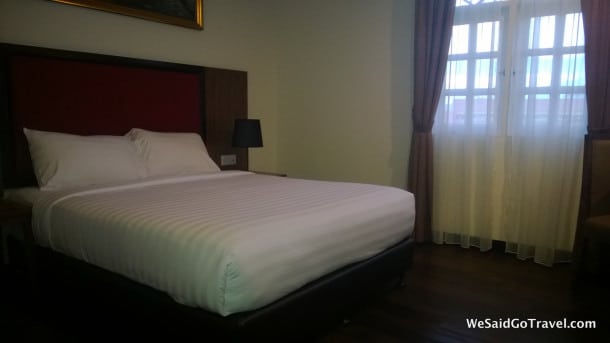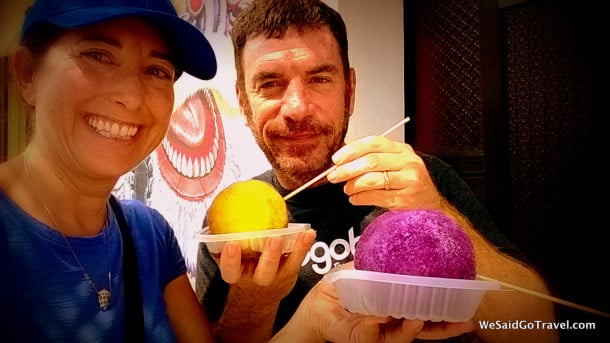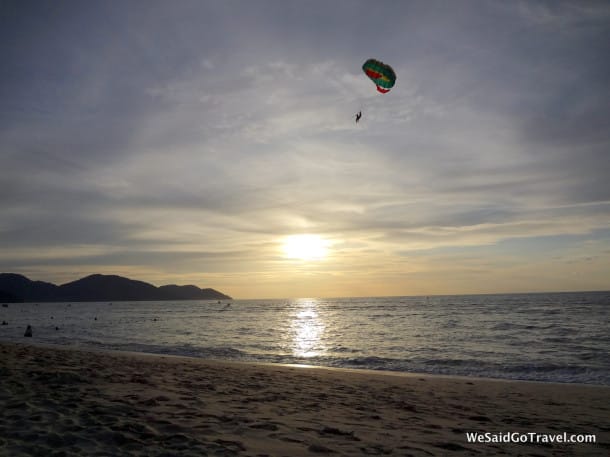
By George Rajna
We’ve been to Penang, Malaysia quite a few times since first visiting the island in 2009, and each time we return only enhances my appreciation for the island known as the “Pearl of the Orient” (due in part to its rich, multicultural heritage).
Our original visit focused on the touristy section of the UNESCO World Heritage-designated George Town and a visit to Kek Lok Si, an ornate Buddhist temple located 45 minutes outside of George Town. When we returned in early 2013, in addition to getting reacquainted with George Town and Kek Lok Si, we discovered the quaint waterfront with ornate Chinese architecture dating back to the turn of the century. Back then, Penang was a burgeoning hub for merchants passing through Southeast Asia.
We also ventured over to Batu Ferringhi, known as Penang’s most attractive beach; we were impressed with the fine white-sand beach and its clear and inviting warm waters. Batu Farringhi is touristy with plenty of restaurants and resorts to handle the daily influx of both local and international travelers.

Toward the end of 2013 in December, we once again found ourselves back in Penang. This time we became acquainted with the colorful Armenian section of town. Situated between the center of George Town and the scenic waterfront, we lodged at the sizable yet historic Armenian Street Heritage Hotel, conveniently located within walking distance of many of Penang’s best sites, such as Little India, Fort Cornwallis, St. George’s Church, and the Camera Museum. From the top floor platform, the majority of Penang’s historic zone can be taken in from a bird’s eye vantage point. Our hotel room at the Heritage Hotel was spacious and new in appearance, yet tinged with historic character—even though the rooms are equipped with flat-screen LCD TVs.
A park across the street from our hotel housed a lively afternoon flea market where a variety of secondhand merchandise was vended to eager local buyers. Adjacent to the park is a heritage walk lined with Chinese temples and antiquated Chinese-styled homes, sprouting trendy restaurants and entrepreneurs selling snacks such as shaved ice, popcorn, and tasty bakery items such as filled bao pastries with red bean, chicken, or coconut.

In the cooler evenings, we strolled toward the main street, Lebuh Chulia, and often dined at Restoran Kassim Mustafa, noted in The Guardian as one of the ten best cheap eats in Penang; this budget yet delicious restaurant offers tandoori chicken and a variety of prepared Indian dishes that for two set us back only $5-6 dollars.

Those looking for a relaxing place for cocktails can head to the centrally located Reggae Bar, where beers flow freely at street level tables while Bob Marley music permeates the night air. Penang has definitely surprised us on more than a few occasions. We look forward to future visits to enjoy the places we have enjoyed—such as the Armenian area, the waterfront, George Town, ancient temples, and Batu Farringhi—but we certainly intend to once again explore and find more uncovered treasures on Penang, as we always do.
Check out this video for more on our trip to George Town:

Lisa Niver Rajna and George Rajna are co-authors of Traveling in Sin and co-founders of We Said Go Travel. They are accomplished writers, speakers, and travelers who are members of the Traveler’s Century Club, a unique travel club limited to travelers who have visited one hundred or more countries. Follow their adventures in Asia!








Hi Lisa Niver Rajna,
We enjoyed reading your post very much. We love Penang. We rented a renovated Chinese Shop-house on Popus Lane off Transfer Road directly behind the Police Headquarters for 13-months before we left in August 2013 for Istanbul. Life was good there especially being close to Chowrasta Wet Market where we shopped daily for groceries. Thanks for the memories. regards, Michael and Virginia Zullo, NYC USA